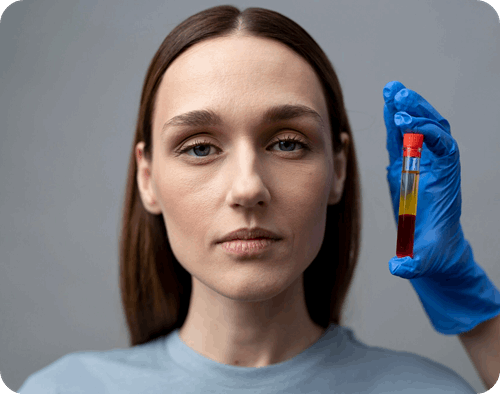Platelet-Rich Plasma (PRP) therapy is a regenerative medical treatment that utilizes the body’s own healing mechanisms to promote tissue repair and recovery. By isolating and concentrating platelets from a patient’s blood, PRP injections deliver growth factors directly to damaged or injured tissues, stimulating cellular repair processes and accelerating healing. Here is more information on PRP therapy and its benefits:
Exploring PRP Therapy
PRP therapy is a treatment approach involving the use of a patient’s own blood to prepare a concentrated solution of platelets. Platelets are blood components that play a role in blood clotting and may contribute to the natural tissue repair process. The therapy is prepared by collecting a small sample of blood, which is then processed in a centrifuge. This process separates the plasma and platelets from other blood components, creating a concentrated solution to be used for therapeutic purposes.
The PRP solution is then applied to specific areas of the body in a controlled setting. The goal is to deliver platelets directly to tissues where they may support the body’s natural repair mechanisms. By doing so, PRP may offer a method to promote tissue restoration without introducing external substances.
Understanding Tissue Repair Functions
PRP therapy is primarily recognized for its applications in aiding the recovery of soft tissues. Platelets in the solution release growth factors and proteins associated with cellular processes. These biological factors are believed to influence tissue repair functions, such as supporting cellular regeneration or enhancing the structural integrity of soft tissues.
Various fields of practice utilize PRP therapy, including orthopedics and sports medicine, where professionals apply it to address conditions affecting tendons, ligaments, and muscles. PRP therapy may also find use in dermatology, where its possible effects on skin restoration are studied. Although specific mechanisms remain an active area of research, the concentration of platelets within the solution provides an area of interest for continuous exploration.
Getting the Procedure
The application of PRP therapy begins with a simple blood draw. Once the blood sample is ready, it undergoes separation in a centrifuge. This step isolates the platelet-rich plasma, which is prepared for use. The concentration process typically yields plasma with higher-than-normal levels of platelets, which is central to the therapy’s design.
Once ready, deliver the PRP to the site where support is required. Application methods vary and may include injections into specific tissues or areas. The overall procedure takes place in a controlled and sterile environment, typically completed in a relatively short time frame.
Preparation for PRP therapy often includes comprehensive consultations with qualified healthcare professionals who evaluate whether this approach aligns with individual needs. Following the procedure, practitioners often provide detailed post-treatment care instructions. The goal is to monitor progress and document changes to evaluate the therapy’s effects.
Find a MedSpa
PRP therapy represents a developing field of research and application in tissue repair. Its foundation lies in its use of platelet concentrations derived directly from a patient’s own blood, which can be applied to areas of the body in need of support. Applications span diverse fields, with a focus on promoting natural repair mechanisms that vary from soft tissue recovery to broader regenerative processes. Understanding its procedures, research, and application areas contributes to a more comprehensive perspective on this therapy for ongoing study and practical use.

